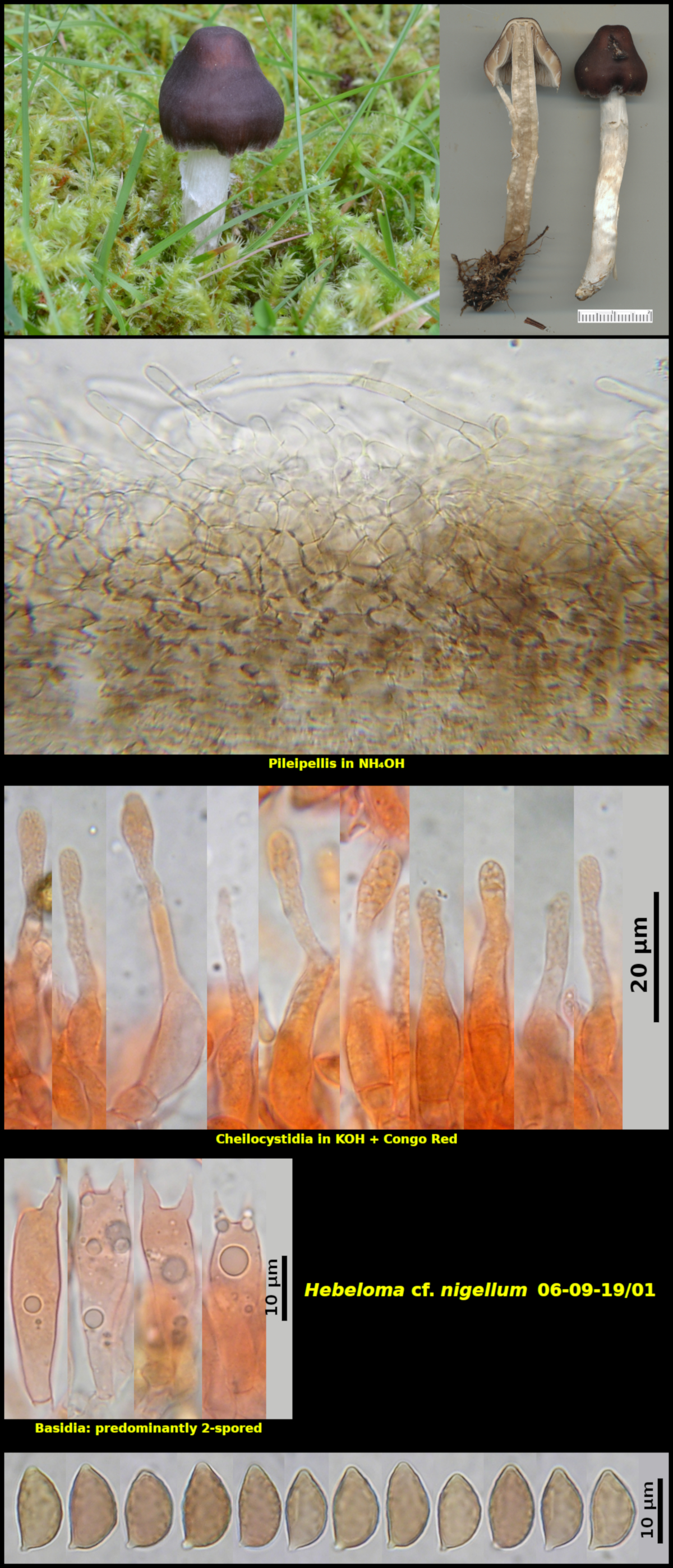Fleshy Fungi of New Brunswick >>
Hebeloma cf. nigellum
Hebeloma cf. nigellum Bruchet

Solitary in a carpet of Rhytidiadelphus sp. in a shady part of a lawn, associated most closely with Abies balsamea and at a slightly greater distance Betula cordifolia, Little Lepreau, New Brunswick (06-09-19/01).
Basidiospores light brown in (weak) spore print, ovoid and with a snout-like citriform apex, conspicuously roughened, darkening slightly in Melzer’s Solution, 9.9-13.5 x 5.6-7.5 μm, Q = 1.58-1.99 (average[21]: 12.4 x 6.9 μm, Q = 1.80). Basidia consistently 2-spored, not clamped at the base. Cheilocystidia forming a sterile margin, lageniform, often swollen at the apex but not distinctly lecythiform, not clamped at the base, 32-45 x 4.2-7.5 µm. Pileipellis a thin cutis or subtrichoderm of smooth to lightly encrusted hypha, with some hyphae apearing to be gelatinous in NH4OH, with a thick pseudoparenchymatous subpellis of more coarsely encrusted brown hyphae.
Collection 06-09-10/01 is not an entirely good fit for Hebeloma nigellum as originally described from Europe and characterized in Funga Nordica or Vesterholt (The genus Hebeloma, Fungi of Northern Europe, Vol. 3). It does not appear to be among the species of Hebeloma described by Beker and Eberhardt in their excellent accont of Hebeloma in Newfoundland and Labrador (Omphalina, 7(5). 2016). Hebeloma nigellum is described in Europe as having amygdaloid basidiospores rather than the citriform ones in Collection 06-09-19/01.
Photo: D. Malloch (06-09-19/01).